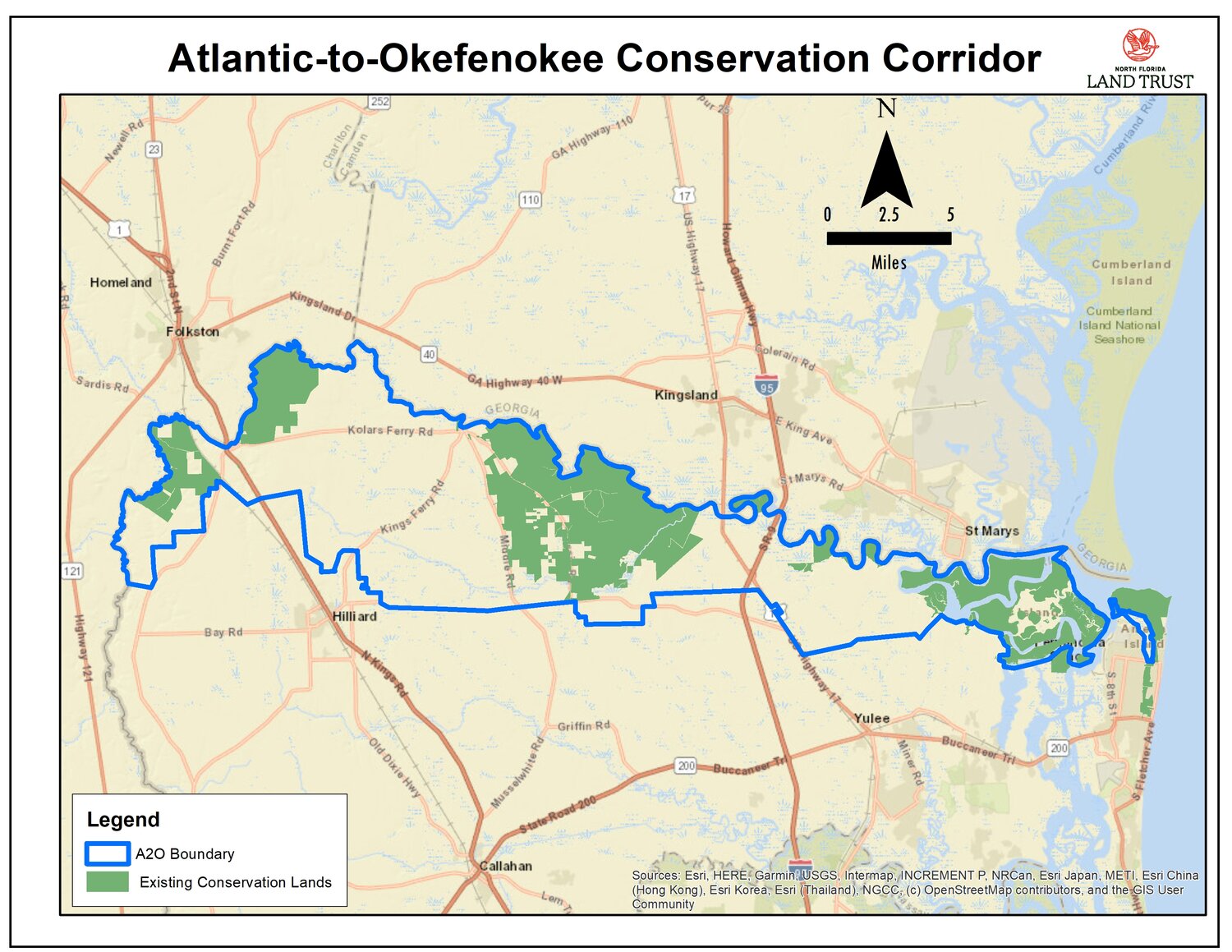The Atlantic to Okefenokee Conservation Corridor, a 55,000-acre potential conservation area known as A2O, has received a major approval. The Florida Department of Environmental Protection’s Acquisition and Restoration Council (ARC) has approved the A2O’s inclusion on the Florida Forever Priority List.
Nassau County and North Florida Land Trust (NFLT), long-time conservation partners, worked together to propose to ARC that they consider adding the critical corridor to the priority list.
Stretching from the Atlantic Ocean on the east coast to the Okefenokee National Wildlife Refuge on the west, the A2O encompasses 55,864 acres that NFLT and Nassau County hope to protect. The corridor includes the John M. Bethea State Forest, the Osceola Wildlife Management Area, and the Osceola State Forest complex. It is also connected by the St. Marys River at its northern boundary. The river is ecologically, recreationally, and historically significant, and is an important habitat for the Atlantic sturgeon, a federally endangered species.
“This is a big deal for conservation and one of the largest expansions to the Florida Forever list we have ever seen,” said Allison DeFoor, president and CEO of NFLT. “Inclusion on this list brings us one step closer to preserving property and saving a part of the real Florida for our grandchildren and generations to come. We are grateful for inclusion on the Florida Forever priority list and hope the Governor and Cabinet will approve funding for acquisitions within this significant conservation corridor.”
“This is a great achievement for Nassau County and our residents who value nature and conservation,” said Brandy Carvalho, Nassau County’s director of strategic advancement and economic resources. “The A2O is a complement to our already robust conservation land acquisition and management program and is another innovative approach initiated by the Nassau County BOCC to protect vulnerable and valuable lands in Nassau County for generations to come.”
The A2O completes a 90,000-acre conservation corridor in the southern watershed along 80 miles of the St. Marys River, doubling the area of existing conservation lands near its boundaries. The conservation corridor includes more than 1,200 acres that the state has already identified as necessary additions to Ralph E. Simmons State Forest and Ft. Clinch Preserve State Park.
The A2O includes many areas that are extremely important to Florida’s ecosystems, including underrepresented natural communities, natural floodplains, priority areas for groundwater recharge, sensitive coastal resources, and priority areas for rare species.
Nearly 12,000 acres in the A2O are listed as a priority for Nassau County’s Conservation Area Acquisition and Management Program. NFLT worked with Nassau County to identify, evaluate and assess conservation areas for acquisition and management. Nassau County is the ninth fastest growing county in Florida and faces the threat of development on these ecologically significant areas.
In addition to its ecological significance, the A2O corridor also has historical significance. The land once served as a settlement area for Native American tribes such as the Timucuans, Uchees, and Muskogees, as well as the Gullah Geechee. A2O and St. Marys were important living, feeding, and fishing areas for the population, and the northern river boundary was part of the St. Marys River Paddling Trail. A2O also has sites used in the American Revolution, War of 1812, and American Civil War.
The next step will be approval by the ARC Board of Directors before the acquisition of land or conservation land within the A2O is presented to the Governor and Cabinet for funding approval, which will most likely occur next year.

